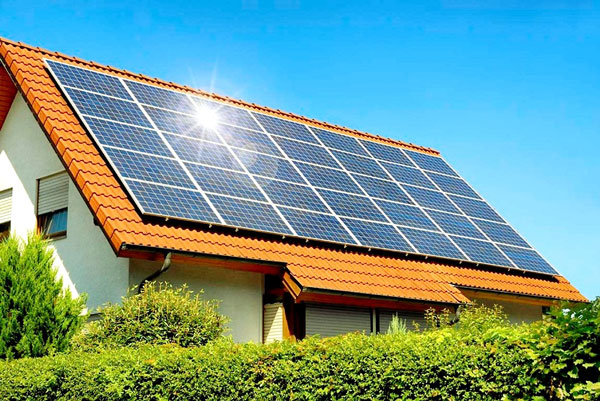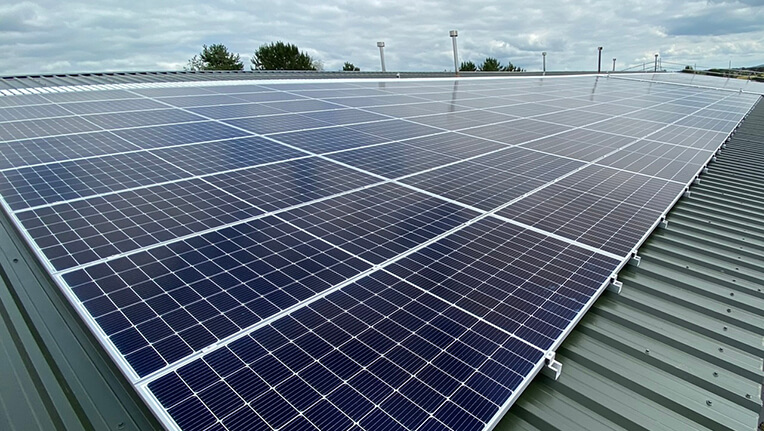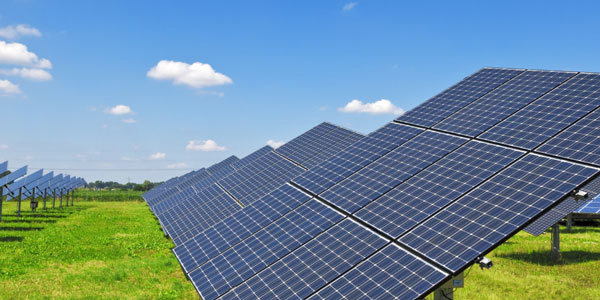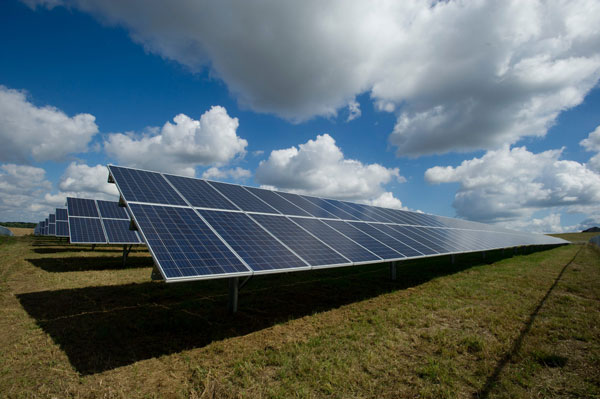Polysilicon panels reduce carbon emissions, are durable and reliable, versatile in application, cost-effective, and recyclable, enhancing environmental sustainability
Reduce Carbon Footprint
Polysilicon solar panels are one of the best solutions that help in eliminating carbon dioxide, which are caused by producing energy. Polysilicon panels work differently from the traditional energy sources we use where they burn fossil fuels, releasing pollutants and greenhouse gases.Lowering Greenhouse Gas Emissions Immediately
Polysilicon panels start to produce pure solar energy as soon as they have been installed. In this way it avoids the combustion of fossil fuels and thus does not emit carbon dioxide, sulfur dioxide and other pollutants that are normally produced by power plants. For instance, an average solar panel system can reduce around 100 tons of carbon dioxide during its innocent and relate 2500 trees to be planted.Energy Payback Time
Understanding the sustainability of Polysilicon panels In order to properly understand the sustainability of the polysilicon panels, it is important to consider the energy payback time of the panels. A solar panel generates the same amount of energy it took to manufacture in the similar time. Recent progress has brought this down to less than two years for panels mounted in favorable locales. The rapid energy payback is likely to mean that, over its lifecycle, a panel will return more energy to the environment than is had been used in its production - largely by lowering the need for energy from fossil fuels.Global Consequence on Sustainable Energy Adoption
A significant factor that is driving the transition to clean energy supplies on a global level is the worldwide adoption of polysilicon panels. SunPower Corporation Countries like Germany, China and the USA have significantly diminished their carbon footprint by the inclusion of utility scale solar into their national energy grids. This will not only assist countries to actualize their international carbon reduction goals, but with the right plan, Canada can also offer a great example of how to generate energy from nuclear in a way that is sustainable.SuperStar Effectiveness
Production methods have also improved, leading to technologically advanced polysilicon panels with greater implementation efficiencies, and a lower carbon output from the manufacturing process itself. Contemporary solar module factories already turn to cleaner sources of supply and advantageous production processes to reduce the carbon emissions per unit of generating solar power, even more than they have done so far. For example, new production facilities have shifted to electric furnaces, which can be driven by renewable energy and produce far fewer emissions than gas-fired furnaces and other traditional methods.Sustainable Long-Term Actions
Steps being taken to accelerate the creation of a sustainable solar industry include initiatives to cut the lifecycle carbon footprint of solar panels. It not only reduces operational efficiency, but also promotes the advance of recycling technologies. The goal of making old solar panels more recyclable is to recover materials such as silicon and silver back from end-of-life solar panels and minimize the use of virgin materials in new solar panels, overall reducing the environmental footprint of the solar panel production.
Long-Term Durability and Reliability
One of the primary reasons for this is that polysilicon solar panels are well-known for their " Longevity, meaning it can last a long time and for years which is critical when it comes to needing to reduce the environmental impact long term. The ability to withstand extreme environmental conditions and yet perform optimally is what makes them so durable.
Built to Last
Although more expensive, polysilicon panels are designed to be in it for the long haul. These panels have an average lifespan of over 25 years so you will continue generating electricity long into the future! Polysilicon solar panels must retain a minimum 80% of their initial efficiency 25 years into their operational life, according to the industry standard. For instance, a National Renewable Energy Laboratory (NREL) study showed that their solar panels continue to produce at 90% capacity after 30 years.
Environmental Stress Response
Polysilicon panelsare built with materials and technology that makeiwthstandenvironmental exposure:UV,powerfulwinds andtemperature changes. The durability of these panels means they need to be replaced less frequently than many PV panels, so they have a lower environmental impact from the manufacturing of the panels and the transportation and disposal of the components.
Warranty and QC
Polysilicon solar panels are usually well-supported by warranties from manufacturers, proving that they believe the product should long outlast the warranty term. Typical warranties include a 25-year performance guarantee and a 25-year coverage or more against manufacturing faults. It assure both consumers and investors, so that is why whats adoption land on the platform.
Efficiency Over Time
Polysilicon, on the other hand, has a very slow degradation rate and will keep a high energy output throughout its life. Data indicates that these panels will degrade by 0.5% to 0.7% per year, on average. overhead panel performance The rate at which these panels lose efficiency is also very low, which does not have an efficiency loss beyond 15% to 12% until the end of their useful life (i.e., the end of their service life).
Economic Impact
The durability of polysilicon solar panels also means they offer economic value over time. These panels offer a stable energy cost platform (powernet) and this is important for both the power grid and the consumer. The dependability of these panels has led to an increase in solar-powered infrastructural development, resulting in a well established economy starting in the direction of craftsmanship and an environmentally friendly consumer impression.
Wide Range of Applications
In addition to its high strength and durability, solar panels manufactured with polysilicon are also highly versatile across applications in a whole host of sectors. Characteristics such as these will also help to enhance the sustainability impact of the product by increasing the versatility of the range and where it can be used, from urban areas to more remote locations, encouraging the widespread uptake of renewable energy.
Residential and Commercial Installations
Polysilicon Solar Panels - Polysilicon solar panels are growing in popularity in urban settings for residential rooftops and even commercial buildings. The effect of reducing the use of grid electricity in this application is even better, and it absorbs sunlight, thereby making it less of an urban heat island. With local regulations in cities like San Francisco and Berlin to encourage solar panels on new buildings, this points to a wider move towards the incorporation of renewable energy solutions in urban planning.
Large-Scale Solar Farms
Polysilicon solar panels are a key ingredient in scalable solar operations. Solar farms can span hundreds of acres and are usually sited in sunny or high solar irradiance areas. The Tengger Desert Solar Park, which is the largest solar farm in the world in China is more than 1200 kilometers and an important contributor to the renewable energy goals of the emerging country. This showcases the ability to scale polysilicon based solar technology for addressing the energy requirements in the country and the world.
Agricultural Integration
Agrivoltaics - or the idea of overlying solar panels on top of farming operations - proves to be a good for dual land use. These installations can be installed to serve as a source of shade, also reducing water evaporation and increasing the productivity of crops; all this while generating electricity. Farmers in Japan, for instance, have begun to grow crops under elevated solar panels, saving land (and reducing water demand) with a sustainable agriculture model that then uses the harvested sunlight for electricity.
Remote and Rural Applications
These polysilicon panels are key to getting power to under-served remote and rural regions where highly efficient systems are needed to work in the harshest conditions, and where no grid is available. Solar power units portable and standalone systems deliver much-needed electricity to homes, schools, and medical clinics in rural and remote locations in Africa and Southeast Asia bringing new quality of life and improved economic prospects to these regions.
Dedicated uses in transportation and technology
The amount of sectors that can use polysilicon panels is even more versatile through their integration in transportation modal systems, such as in charging station infrastructures and even in satellite and unmanned space probe technology. Case in point, the Nov an spacecraft Juno, which roves around Jupiter is powered entirely by polycrystalline silicone panels and proves their effectiveness even under the most demanding conditions, such as the voids of space.

Cost-Effective
The most significant breakthrough in the area of sustainable energy generation is the cost-effective polysilicon solar panels due to which manufacturing costs have fallen drastically, and they become more efficient. This enables solar panels to be adopted at a high rate across the globe - a global, available, energy resource for a wide span of class structure.
Lower Manufacturing Costs
The last 10 years saw incredible reductions in the cost of polysilicon solar panels thanks to better production technology and increased manufacturing scale. Solar photovoltaic cells cost about $4 per watt of power in 1980, but they now cost half the price, at under $0.20 per watt. The reduction is mostly due to polysilicon manufacturers getting better and economies of scale with the global upsurge in demand for solar power.
Operational Savings
Once they are installed, polysilicon panels require virtually no maintenance, so the long-term operational costs are therefore guaranteed to remain low in comparison with traditional energy sources. Solar panels are also different from the generation of electricity from fossil fuels, which requires ongoing fuel and operational maintenance costs, as solar panels continue to generate electricity at low additional cost after their initial setup. This feature not only impacts on its economy but also improve its sustainability by decreasing the total environmental cost during its operational life.
State and Federal funding
Solar panel installation is incentivized worldwide by many governments; A feed-in tariff, a tax credit, or a rebate is widely used to pay the system owner for generating electricity with PV-generated electricity. In the US, for example, the solar energy system of any citizen or business that uses the Investment Tax Credit (ITC) can deduct 26% in investment from his/hers federal taxes. Such financial inducements are necessary as they provide a path for more residents to deploy solar installations without a heavy capital outlay.
Rising Prices of Traditional Fuels
Solar power is fast becoming cost-effective with the costs of conventional sources of energy, such as coal and natural gas, which keep on accumulating because of the volatility of markets and greater regulatory padlocks. Because solar power has no variable costs for fuel and may be paid for up front, the fixed cost nature of solar power provides a hedge against rising energy prices and the price spikes that can occur over a longer time horizon, allowing more predictability in the case of businesses and homes.
Return on Investment
Polysilicon solar panel return on investment (ROI) has gone up to connect And when the math continues to make sense - especially with falling installation costs and improving efficiency, alongside lowering utility bills - the payback period for a solar installation can fall to as fast as 5 to 8 years depending on geographic location and local electricity rates. This means that the energy produced is effectively free for decades to come, after the payback period has been fulfilled.
Recyclable and Environmentally Friendly
Polysilicon solar panels are also incredibly easy to recycle, and the production of these panels is done in an environmentally-friendly way. The environmental impact of solar panel or photovoltaic technology was the focus as this industry gains ground.
Eco-Friendly Materials
Polysilicon solar panels are made almost entirely of safe non-toxic materials, such as silicon and glass Silicon, the base material comes from one of the most plentiful material in the form of sand. Whilst other competing technologies may require rare resources - often from conflict-affected areas or classified as hazardous substances - this availability would leave the environmental impact of sourcing raw materials for Battrion technology minimised.
Recycling Programs
The solar industry has matured, and the business world has responded inkind, with prototypical recycling efforts managing the end-of-life solar panel process. Recover valuable materials such as glass, aluminum, and silicon captured from the solar panels and use them in new solar panels or other products. In the US, the Solar Energy Industries Association (SEIA) has a national PV recycling program where it claims that around 90% of a solar panel will be recoverable and recyclable.
Technology has since advanced such that the amount of waste produced in the manufacture of polysilicon panels has been decreased tremendously. Today, cutting methods have become more precise than in the past to reduce silicon waste, with much of the waste recycled back into production line. This not only saves raw materials but also reduces the manufacturing cost.
Life Cycle Assessment
A cradle-to-grave (scope 3) Life cycle assessment of 78% of the Solar Panel models installed in the Institute found that the environmental footprints of Polysilicon based modules are the lowest in terms of greenhouse gas emissions, water consumption and overall pollution. According to studies, the energy payback time, which is to say the time that a solar panel takes to generate an equivalent amount of energy to what was consumed during its production may be as low as one to two years assuming location & efficiency of the panel.
Impact on Biodiversity
Polysilicon solar panels can be installed in many different ecosystems with relatively few harmful side-effects in comparison to the massive land disturbance associated with many larger form of fossil fuel operations. Solar Farms built to work in tandem with agricultural lands and natural habitats can act as protection and a human presence with low ecological impact to the local biodiversity.



